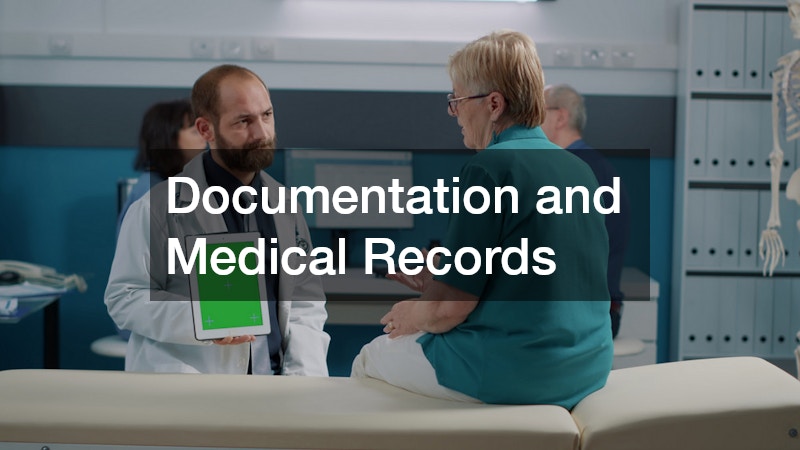Physical therapy can be an invaluable part of recovery and maintaining health. Before attending your first session, it’s important to understand what to expect, how to prepare, and what the process entails. This guide is designed to provide comprehensive insights to help you make the most of your physical therapy journey.
Initial Consultation and Evaluation
During your first physical therapy session, you can expect a detailed initial consultation and evaluation. Your therapist will review your health history and current symptoms to gain a comprehensive understanding of your condition.
This initial meeting sets the foundation for a successful therapeutic relationship, enabling your therapist to tailor the approach based on your unique needs.
The evaluation not only covers your current symptoms but also investigates any underlying causes that may affect your recovery. Your therapist will perform various tests to assess your physical capabilities, such as strength, flexibility, and range of motion. This thorough examination helps in identifying the root of your issues and prepares a roadmap for effective treatment.
Setting Goals and Treatment Planning
Setting clear and realistic goals is a critical aspect of physical therapy. During your initial session, your therapist will work with you to identify achievable objectives that align with your personal and medical needs. These goals serve as a benchmark for progress and help keep the treatment focused and effective.
Your therapist will tailor a personalized treatment plan designed to meet the goals you have set together. This plan may include various exercises, activities, and modalities that are specifically chosen to aid your recovery. Regularly reviewing and adjusting this plan ensures that it remains relevant and continues to push you toward meeting your objectives.
Understanding Various Therapy Techniques
Physical therapy involves a range of techniques and modalities, each designed to address specific issues. Common techniques include manual therapy, therapeutic exercises, and the use of modalities like ultrasound and electrical stimulation. Familiarizing yourself with these techniques can help demystify the process and reduce any apprehension you may have.
Manual therapy often involves hands-on techniques to improve joint mobility and muscle flexibility. This can include massage, joint mobilization, and manipulation, all designed to reduce pain and enhance function. Meanwhile, therapeutic exercises focus on strengthening weak muscles, increasing endurance, and improving overall physical performance.
Clothing and Footwear Recommendations
Proper clothing and footwear are essential for a successful physical therapy session. You should wear comfortable, loose-fitting attire that allows your therapist easy access to any area that may require evaluation or treatment. Breathable materials and athletic wear are generally recommended to facilitate movement and maintain comfort.
Choosing the right footwear is equally important, especially if your treatment involves weight-bearing exercises. Supportive athletic shoes can provide the necessary stability and help prevent injuries during activities. Avoid wearing sandals or slippery shoes, as these could increase the risk of accidents or impede specific therapeutic exercises.
Documentation and Medical Records
Bringing relevant documentation and medical records to your first appointment can streamline the evaluation process. These records may include previous medical diagnoses, imaging results, and any past treatments you’ve received. Having this information readily available ensures your therapist can develop the most appropriate treatment plan from the outset.
In addition to medical records, consider bringing a list of medications you are currently taking. This list can help your therapist understand any potential interactions or contraindications that may affect your treatment. Be prepared to discuss your health history in detail, including any past injuries or surgeries, as these can all influence your therapy plan.
Communicating with Your Therapist
Effective communication with your therapist is key in maximizing the benefits of physical therapy. From your first session, don’t hesitate to express your concerns, expectations, and any apprehensions you may have. A good therapist will encourage questions and provide clear explanations to foster trust and comfort.
Being forthcoming about your symptoms and any changes you experience during therapy is also vital. This feedback allows your therapist to modify the treatment plan as needed for optimal results. Remember, therapy is a collaborative effort, and your active participation is necessary for success.
Creating a Home Routine
Integrating therapeutic exercises into your daily routine requires planning and dedication. Start by allocating specific times for your exercises to develop a consistent practice. Having a dedicated space that is quiet and free from distractions can further enhance the effectiveness of your routine.
Your therapist can assist in creating a realistic and achievable home exercise schedule. They can provide guidance on the frequency, intensity, and progression of exercises to suit your capability. Remember, consistency is key. Regular practice will maximize the benefits of your home exercise program.
Tracking Progress and Adjusting Plans
Tracking your progress is an essential aspect of adhering to your home exercise regimen. This feedback is invaluable for both you and your therapist, assisting in evaluating the effectiveness of the prescribed exercises. Regularly reviewing your progress can help identify areas for improvement and boost motivation by showcasing tangible results.
By understanding what to anticipate from physical therapy, how to prepare for your sessions, and the significance of home exercises, you can enhance your recovery experience and achieve your rehabilitation goals more efficiently. Armed with the proper expectations and preparation, you’ll be well-equipped to navigate your physical therapy journey successfully. Remember, the key to successful rehabilitation lies in active participation, effective communication, and unwavering commitment to your agreed-upon goals.



